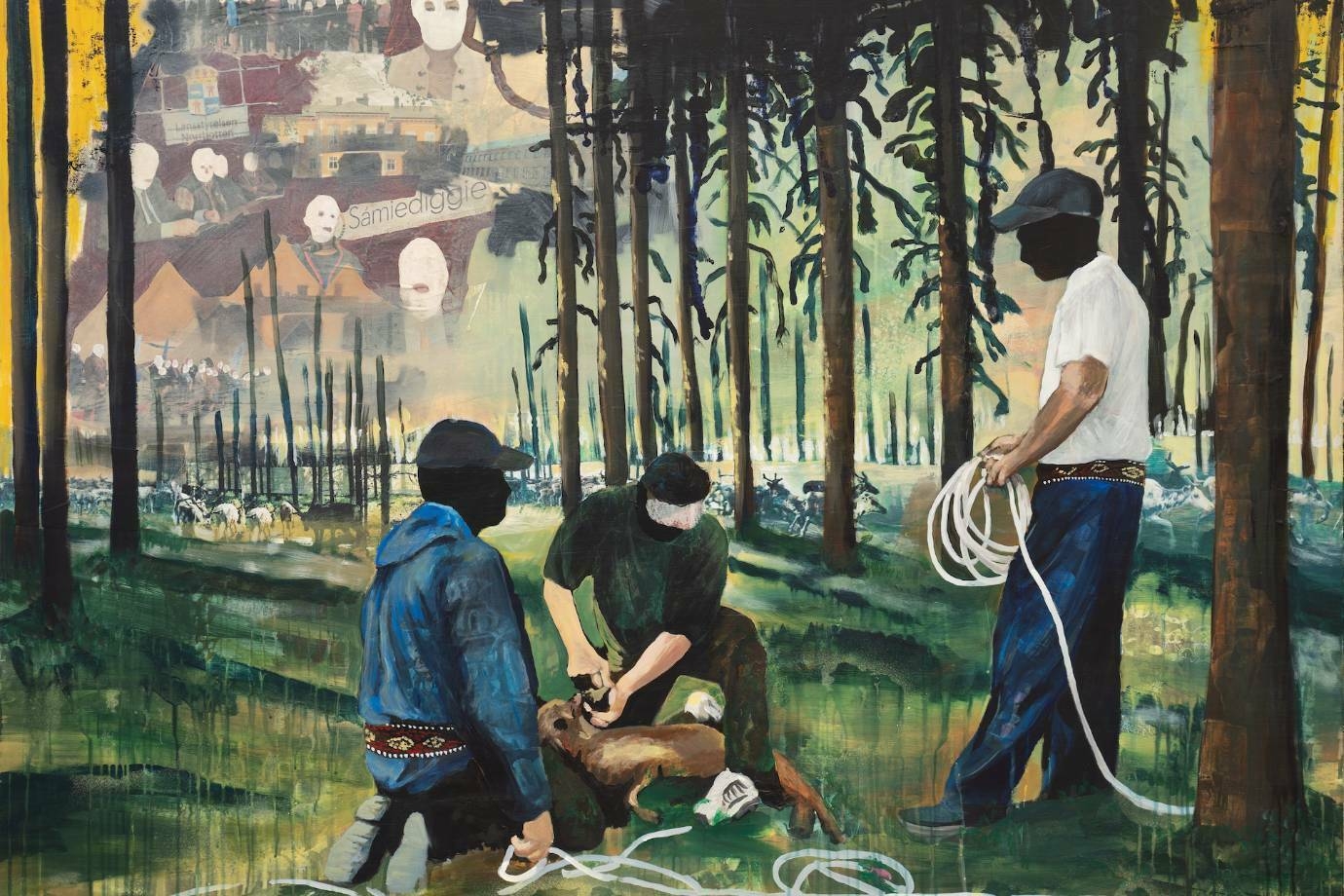In Sunna’s documentary and satirical style, the monumental painting We do not scream in the forest connects the non-linear narrative that runs through the exhibition. The painting presents a tableau of historical figures against a darkened sky and a landscape that stretches from the church in Pajala, the Riksdag building and Uppsala’s State Institute for Racial Biology. Pictured from left to right are Hjalmar Lundbohm (1855-1926), geologist and first manager of the mining company LKAB; Carl Von Linné (1707-1778), one of the first scientists to travel to Lapland; and Gustav Vasa (1496-1560), King of Sweden in the period 1523-60. They are all historical key figures who represent the start of the extermination and assimilation of the Sami people under the Swedish state power. At the bottom of the painting are buried human skulls and light blue flowers that resemble the symbol of the nationalist and right-wing populist party Sweden Democrats. In the painting, we can also see fragments of historical scenes that pass through the generations, as his sons experience in a recurring way what their father, grandfather and great-grandfather also went through.
With different motifs and in Sunna’s characteristic style where a figurative expression, sharp contours and collage are throughout, all of the paintings in the exhibition convey different fragments of the same story of injustice, oppression and colonization. With the court situation as a frame, Vi skriker inte i skogen visualizes Sunna’s family history and resistance through generations, where the courtroom has time and again been the setting for the injustice committed.
We don’t scream in the forest gives a sensual insight into a lifelong experience in resistance and power. Overall, the exhibition conveys a strong story related to the Swedish nation-state’s policy towards the Sami, the mining laws and social policy in northern Sweden. With the courtroom as the setting, the audience is placed at the center of a comprehensive narrative about the suffering and struggle of the Sami. The question is raised as to who has the right to judge whom, according to which laws and with which interests in mind.
Anders Sunna (b. 1985) is an artist from a forest reindeer herding family in Kieksiäisvaara, Sápmi (Norrbotten, Sweden). In his practice, Sunna explores different formats and expressions as tools for political activism and satire. The works convey stories of oppression and violence against the Sami people. More specifically, they depict Sunna’s own history and the family’s fifty-year struggle to protect and defend reindeer husbandry and the culture and way of life of their ancestors. The artist’s paintings, graffiti, sculptures and installations bear witness to state abuse of authority and power, colonization of land, exploitation of natural resources, forced displacement and oppression.




